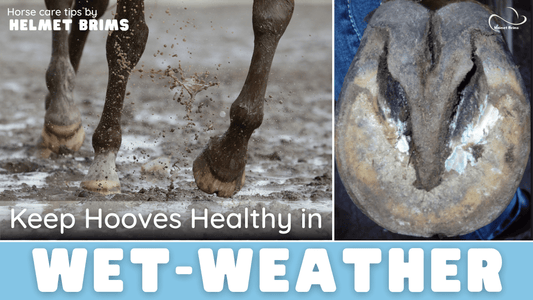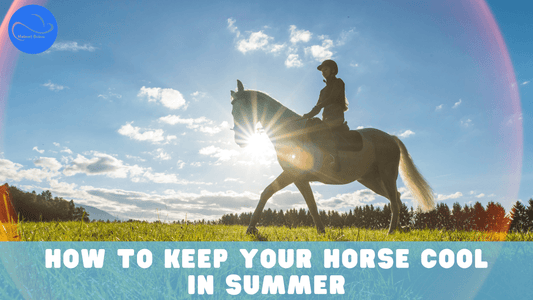How to Keep Your Horse Cool in Summer
Share
Not only does summer in Australia mean longer days and more time with your horse, but it also means there are a few extra precautions to keep in mind for their safety.
Horses naturally cool themselves by sweating, but as we ourselves know, there are usually more effective actions to undertake to keep cool in the summer heat. Read on to check out our top five to keep in mind as we move into warmer weather!

- Keep your horse hydrated
Horses usually need around 55 litres of water a day, and that's not even taking into consideration the increase needed to combat the extra heat and sweating in summer! Keep troughs full (and bring out any spare ones you may have) to ensure your horse always has access to water.
Increase the amount of times you clean these troughs, too. In the warmer weather, troughs are more likely to harbour algae or become breeding grounds for mosquitoes. Cleaning the water sources more often than normal is a simple way to prevent these potential contaminants.
Finally, consider adding electrolytes to your horse’s water during the warmer months to replenish the minerals lost in sweating, or try out salt licks, which also replenish sweated salts.
- Provide airflow
Horses are just like us - getting a refreshing breeze to pass you on a hot day can mean a world of difference. If your horse is kept in a stable or barn, keep the doors open during the day to try and regulate the temperature. Or, if the day is particularly still, use fans to give your horse some respite.
If your horse is kept solely in a paddock, ensure there are multiple options for natural shade, or consider building a shelter to keep your horse from having to endure the constant sun. This significantly reduces the risk of heatstroke, which we’ll discuss in more depth later.

- Control flies
The last thing anyone wants on a hot day is to be swarmed by flies, but unfortunately, the heat is where flies thrive. These pests are particularly drawn to horses too, but there are a couple of things you can do to minimise their presence for your horse.
Keep stables clear of manure and soiled straw. The waste is what brings the flies in, so try increasing the amount of times muck out a stall in the summer. Lining stalls with horse-safe fly traps can also make a difference when it comes to the stable area.
Provide your horse with protection. There are plenty of different fly-minimising variations, like repellents, fly sheets, and fly masks. Test out each one on your horse, keeping in mind what works for one horse might not work for another.
- Sunscreen
Horses, especially lighter coloured horses, can (and do!) get sunburnt. For the summer, try to put sunscreen containing zinc oxide on the more sunburn-prone areas of your horse, including their muzzle, nose, and around their eyes, before they go out in the sun.
Having shelters or trees for shade (as mentioned above) will further help reduce the risk of sunburn, keeping your horse from having to stay in direct sunlight for too long.

- Alter ride time
Whether this is reducing the amount you ride or changing the time of day you ride, consider altering your ride time during warmer days to keep your horse from overheating. Early mornings and evenings are ideal, but if you must ride during hotter hours, offer your horse frequent breaks in the shade and with clear access to water to keep them cool.
Further, no matter the time of day (or if you even rode your horse), incorporate a water cool down period into your horse’s routine. This could include sponging your horse with cool water or spraying them with cool water from a hose, anything that gives them some respite from the heat!
Remember to dry your horse well after this activity, as excess water can hinder a horse’s natural cooling processes.
These tips should help reduce the risk of heat stroke, which includes symptoms of excessive sweating, panting, lethargy and incoordination. Monitor your horse closely for these signs during the summer and if you do suspect some form of heat stress, contact your veterinarian immediately. You can click here to learn more about heat stroke in horses.
Remember, to also take care of yourself this summer! Start by reading this article on UV protection, or by purchasing a helmet brim to keep you safe on your warm rides.





